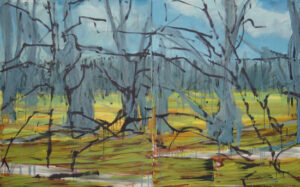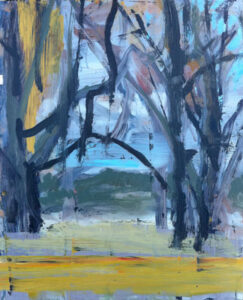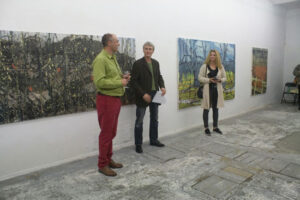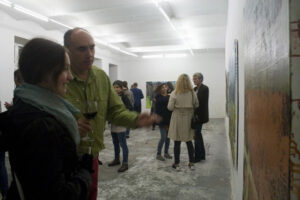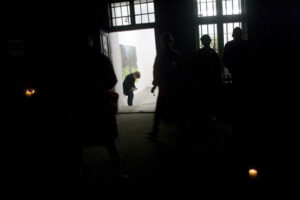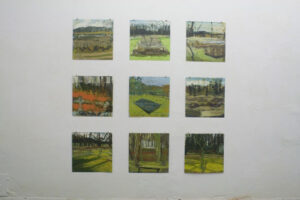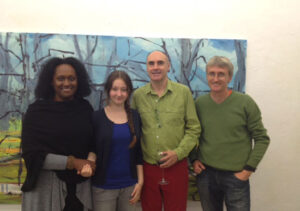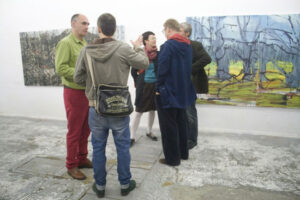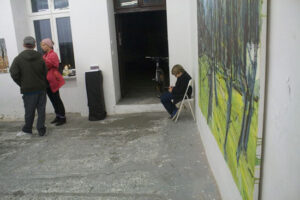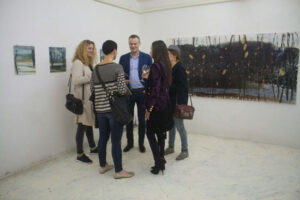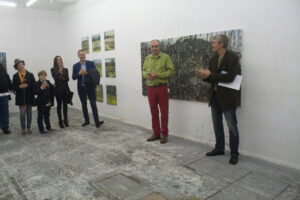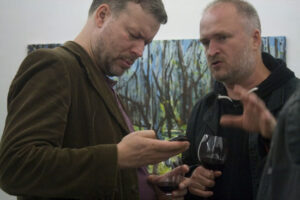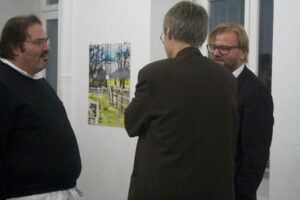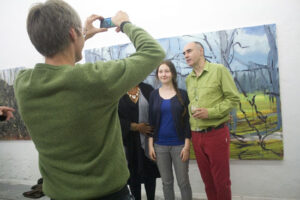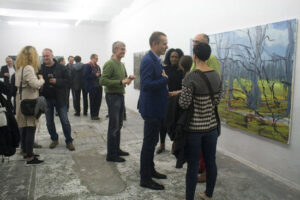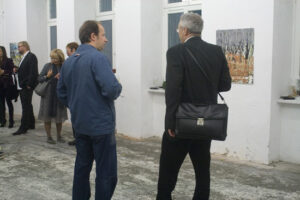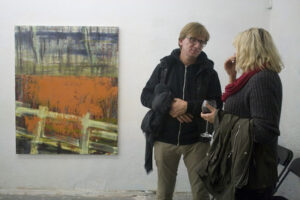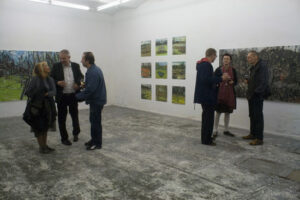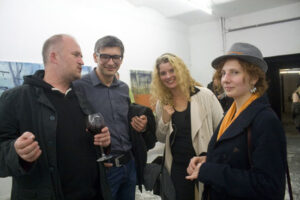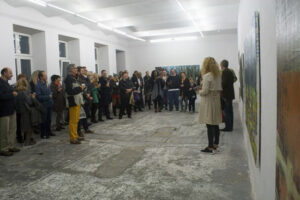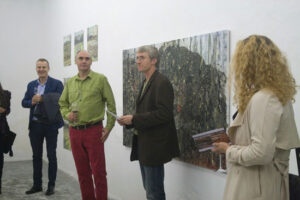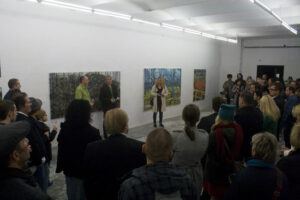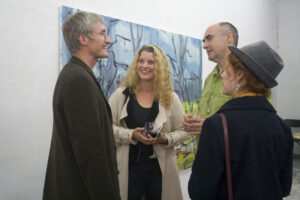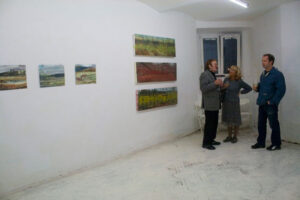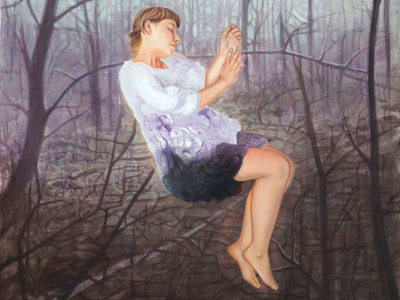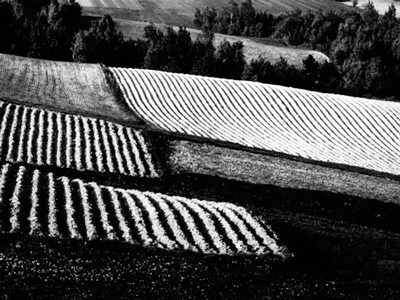Linki: zaproszenie na wystawę
ROY PICKERING – ARTIST’S STATEMENT
Drawing is central to all the work. What I call drawings are usually works on paper, but the drawing, be it on paper, canvas or on metal is the process of selection and omission, and the organization of elements within the format. What I put in or leave out is what makes it mine. Every decision I make about a work is a drawing decision. As well as some drawings and photos made on site, I do tend to start off on paper (often whilst I’m making stretchers and stretching canvas) and these drawings do come before and after, or alongside the paintings. I like to work quickly. That is to say, allowing for a free flow of mark making without conscious intervention, at least in the initial stages, but also at various points during the process. In this way I can get beyond my conscious ambitions for the work and produce something that genuinely surprises me. As for materials, I’m a firm believer in using what’s to hand. I like to paint with sticks, dried up brushes, rags, that sort of thing, and I can’t resist a nice coloured mud. When I do need brushes I prefer cheap decorator’s brushes and throw them away after. First and foremost It’s about a response to the place, situation or to the work I’m making. I am not detached from the subject. Rather than observe or record the landscape, I feel I am part of it. The paintings are a personal response. Only I can make my paintings because only I have lived my life. I try to find ways of painting that are consistent with the subject. More than anything though I want to say things that could only be said in paint, and could only ever be about this place. A big change in my work came when I moved back to Nottinghamshire in 2003 after living in London for 18 years, and started making work about the landscape and history of this place I knew as a child. I went looking for evidence of past workings of this landscape and I found some very strange places indeed amidst the run down villages of the now almost extinct coalfield, the remains of the ancient woodlands of Sherwood Forest, and the isolated country estate of Welbeck Abbey, formerly the seat of the Dukes of Portland with it’s private lakes and woods. There is a strong sense here of a place past it’s time : stuff left over from the war: paths leading to the edge of fields, or nowhere : old dead oaks. There is an eerie sense of time moving by; an overwhelming indescribable, beautiful melancholy.
Roy Pickering 2014
Roy Pickering – Brief Biography
Roy Pickering was born into the North Nottinghamshire mining community at Welbeck in 1954, and studied painting in Birmingham in 1970’s. Roy currently has studios in Nottinghamshire, London and Nairobi. He has exhibited regularly for more than 30 years and has work in numerous public and private collections in the UK and abroad. Upon graduation Roy taught in further and higher education in Nottinghamshire and London, undertook numerous education projects and residencies, and has worked for the Tate Galleries in London since 1989. He also regularly visits and works in Kenya.
Figurative work has centred around themes of family and family history, and landscape projects include the Cambridgeshire fens, and three Kenya series in 1986, 1997 and 2010. Having been based in London from 1987 – 2003, Roy Pickering moved with his family back to Nottinghamshire where he began his current work the „Welbeck Project” exploring the landscape and history of his native Sherwood Forest. Recent exhibitions have included a two person show „New Landscapes” in 2010 at the Gallery in Cork Street, London ; „Earth Critical”, a group show in Alba la Romaine, France in 2011; a one-man exhibition, „On Red Ground” at the Nairobi National Museum in Kenya in 2011. Roy most recently had an open studio event in 2012.
Roy Pickering married Veronica Moraa, who is Kenyan in 1982, and they have two grown up children.

